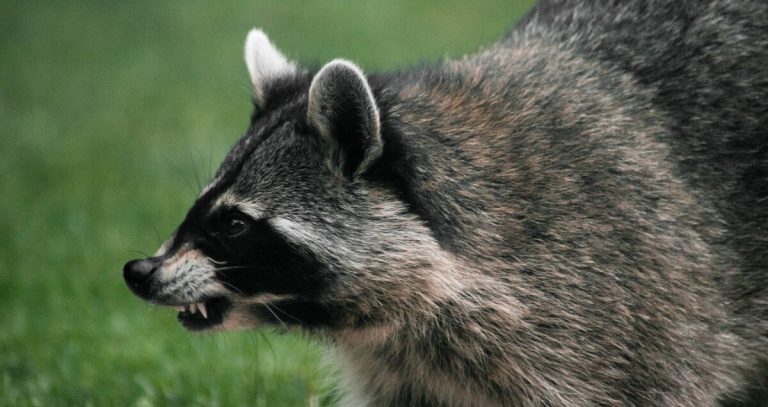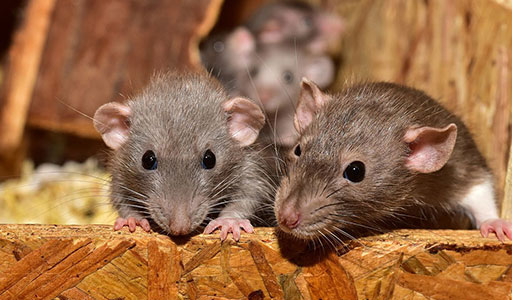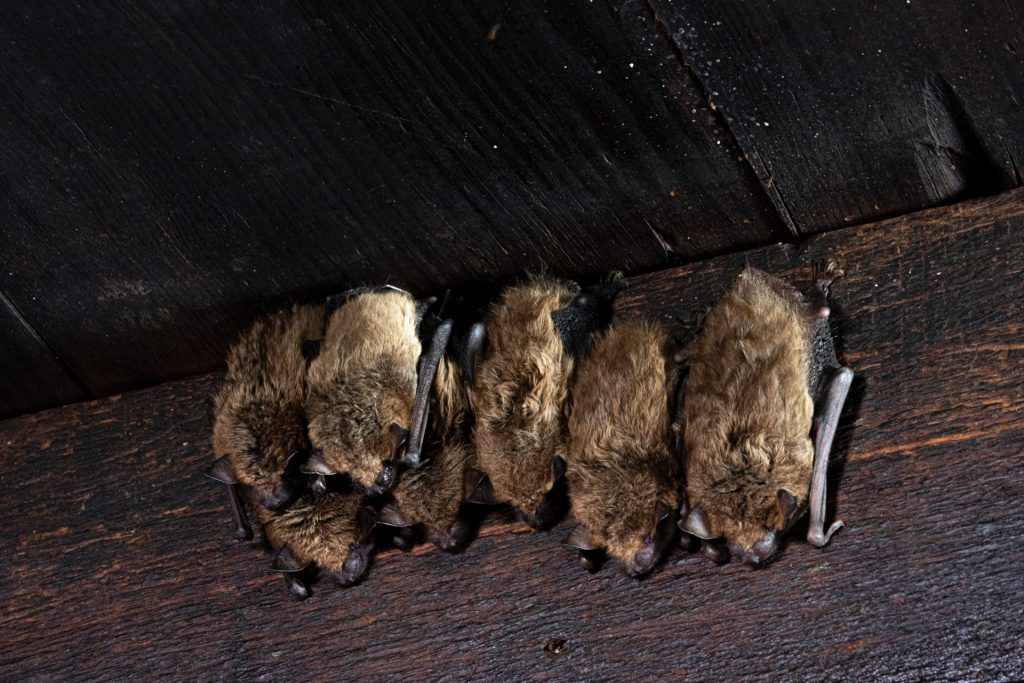Animal Sounds
We use animal sounds as a primary piece of evidence to determine what kind of wildlife is in your home or on your property. Paying attention to the type of noise and when you hear it can help our wildlife technicians identify the animal.
When Do You Hear Animal Sounds?
Animals will make vocal and movement noises. Movement noises include scratching, scampering, thumping, running, and chewing. When you hear animal movements is one of the best methods for figuring out the kind of animal in your attic.
- Nocturnal animals are active at night and sleep during the day.
- Diurnal animals are active during the day and sleep at night.
- Crepuscular animals are active during the twilight hours, the time before sunrise, and after sunset where the sky is only partially illuminated by the sun, neither totally dark nor completely lit.
Nocturnal Animal Sounds in Your House
Most nuisance wildlife are active at night in your home. Residents can generally tell the difference between tree branches scraping against siding and an animal infestations. Nocturnal animal sounds also include clawing, rubbing, and whining.
As rats and squirrels are common house invaders, homeowners may hear chewing and gnawing, as well. Additionally, certain pests emit vocalizations, from the growls and screams of raccoons to the clicking sounds made by opossums.
Animals can also find suitable shelter on your property outside of your home. Most wild animals’ first instinct is to avoid humans. So unless you happen upon them, you’re more likely to hear them.
Raccoon Sounds

Raccoons are one of the biggest culprits when it comes to loud noises at night. Adult raccoons can weigh over 20lbs. You can easily hear a 20lb raccoon running, thumping, crawling, and climbing in your attic.
Raccoons make vocalizations like purring, chittering, growling, snarling, hissing, whimpering, and even screeching. During the spring, raccoons seek shelter to give birth. The presence of kits in your attic leads to noises like mewing, crying, and whining noises. These kitten-like noises eventually transform into louder thumping noises and light snarls as the kits grow and start wrestling and playing.
Rodent Sounds

Mice are known to make squeaking or even high-pitched singing sounds, especially when babies are present or when the males are trying to find a mate. Rats can make squeaking, hissing, and chattering sounds.
Many mouse and rat sounds are produced by their claws digging into surfaces to get a better grip, or when they scurry from one place to the next. Additionally, rodents will chew wooden baseboards to create larger holes for entrance or new pathways. As rodents move across baseboards, drywall, and floorboards, you are likely to hear the light pitter-patter of footsteps.
Rats and mice tend to be nocturnal or crepuscular, but they are intelligent animals that adapt to you. They are most likely to be active when you are not there or inactive.
Bat Sounds

Bat often roost from within wall cavities or in attics, as these locations are suitable substitutes relative to their native shelter (trees, caves, and crevices). As for identifying bats sounds, their vocalizations sound like squeaks and chirps. Homeowners might be able to hear scratching or fluttering in their attic.
Diurnal Animal Sounds Inside
Squirrel Sounds
If you hear sounds in your attic during the day, most times it is a squirrel. Squirrels commonly produce scurrying, scampering, and scratching sounds in the attic.
You’ll hear squirrels as they enter and exit your home. They often roll acorns or nuts, which describes that odd rolling sound emerging from the ceiling. Squirrels will also produce gnawing and grinding sounds similar in mice.
Chipmunk Sounds
Chipmunks most frequently use a high-pitched chirping noise. Their ‘chuck-chuck’ call is often mistaken for birdsong. But when responding to threats, you may hear a high-pitched ‘wee.’
Rattlesnake Sounds
Depending on the species and time of year, snakes can be both nocturnal and diurnal. The most recognizable snake noise is a hiss followed by the rattle of a rattlesnake.
Unsure of what animal is making the noise?
What Should I Do if I Hear an Animal Noise in My House?
Do not try to solve the problem yourself. There can be unseen dangers. Animals in your attic will have left feces that carry diseases and fungus. If threatened, animals can attack.
If you have heard an animal in your home or on your property, call a professional to help assess the situation. An animal in your house can be a cause of concern. Raccoons, squirrels, rodents, and bats will damage your home. Not every animal in your yard is a nuisance. Deer and coyotes tend to move locations often. Rabbits, voles, and prairie dogs can destroy landscaping and gardens.
At Trutech, our wildlife inspections are free. We will assess your situation and provide a custom solution for your nuisance wildlife problem.
Animal Sounds in Your Yard
Not all nuisance wildlife issues happen inside your home. Your yard provides plenty of resources for animals.
Coyote Sounds
Fox Sounds
Beaver Sounds
Otter Sounds
Vole Sounds
Deer Sounds
Prairie Dog Sound
Goose Sounds
Rabbit Sounds
Muskrat Sounds
Bird Noises
Chimney Swifts
Additional Nuisance Animal Problems
In addition to making lots of noise and disturbing residents, animal infestations lead to contamination. Pests spread disease through fecal matter and collections of urine. Unused food, dead carcasses, and fresh droppings also attract unwanted insects such as flies and maggots. While building nests, animals cause damage by tearing up insulation and making exit points larger with their claws and teeth.
Due to the number of problems pests cause, homeowners should take action as soon as they hear animal noises in the attic or walls. Since most pests will attempt to defend themselves if approached, it’s best to contact local wildlife removal specialists at Trutech for safe and effective removal.


